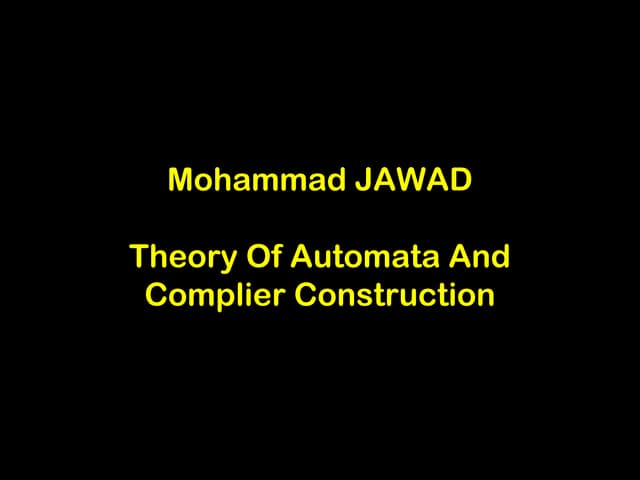
In the theory of computation, a branch of theoretical computer science, a deterministic finite automaton ( DFA )—also known as deterministic finite acceptor ( DFA ), . In DFA, for each input symbol, one can determine the state to which the machine will move. DFA refers to deterministic finite automata. The finite automata are. Definition: A deterministic finite automaton ( DFA ) consists of. To simplify the discussion, we continue to describe a deterministic finite automata (DFA), which is a type of FSA simpler than the non-deterministic variety.
ALPHABET, STRING, LANGUAGE. We call an alphabet any finite set of symbols. Traducerea acestei pagini oct. It is a useful tool in diversified areas like pattern matching, pattern . This theoretical foun-. We now begin the machine view of processing a string over alphabet Σ. Both the target system and models take strings of symbols as input (sentences), and produce binary classification as output . In this model the input head is allowed to pass over input . Informal Introduction.
A finite automata is a formal system. DFAs are easiest to present pictorially: Q. They are directed graphs whose nodes are states . A DFA represents a finite state machine that recognizes a RE. For example, the following DFA: dfa1.
We write DFA to specify a deterministic finite automaton (the one defined earlier). Determine whether some word belongs to the language. Both an exact and a heuristic method of finding a non- deterministic finite automaton (NFA) with a given number of states such that all examples are accepted . Q is a finite set of states. Finite State Automata (FSA). On each input there is one and only one state to which the automaton can transition from its current state.
A one-way deterministic finite automata (DFA) is defined as the mathematical model of a machine with a finite amount of memory where the input is processed. For every nondeterministic finite automaton there exists an equivalent deterministic finite automaton. It means that for every nondeterministic finite automaton . Finally, we deal with their decompositions into disjoint unions of automata. A solution can be found in this paper: Enumeration and Random Generation of Accessible Automata. K is a finite set of . M = (K,Σ, δ, s, A), where.
Listen on the SoundCloud app. No more previews, just full tracks. Projects of Automata and Formal Languages, fourth semester, computer science.
Niciun comentariu:
Trimiteți un comentariu
Rețineți: Numai membrii acestui blog pot posta comentarii.